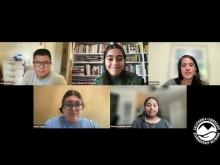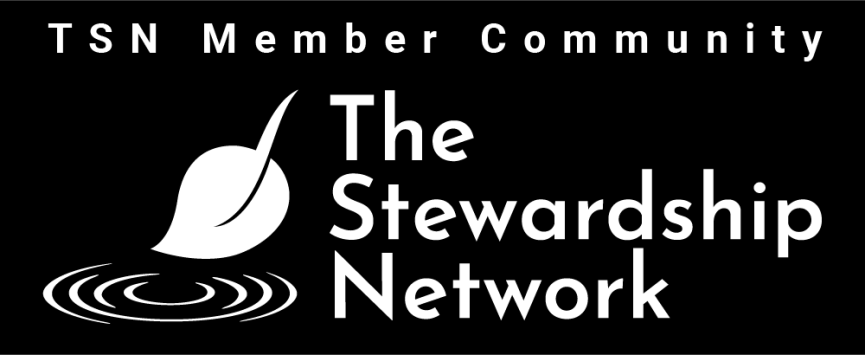Collaborative Capacity Research Brief
- Details
-
We are at a pivotal inflection point for addressing landscape scale challenges in the United States and across the globe. From climate change and land-use planning to water management and environmental justice, complex and increasingly urgent issues cross political boundaries, scales, demographics, and sectors. Collaboration is paramount for successfully addressing these issues, and practitioners, funders, and researchers all have a role to play in finding and implementing landscape-scale solutions. However, even when diverse groups work together, success isn’t guaranteed.
Collaborative capacity is essential for all kinds of partnerships, groups, and networks to effectively work together. Yet even those who support this work are not entirely familiar with what collaborative capacity is, nor why it’s important. Network practitioners, funders, and researchers need more information about collaborative practice so they can partner for greater impact at scale. To help address this need, the California Landscape Stewardship Network commissioned a study that explored the elements of collaborative capacity and the essential role it plays in achieving social and ecological goals.
What Does Collaborative Capacity Make Possible?
- Details
-
Collaborative conservation and stewardship offer effective approaches for addressing complex challenges such as climate change, biodiversity loss, and environmental justice. They also provide innovative ways to fill governance gaps and make inclusive decisions in situations for which we have no sufficient structure, processes, or abilities. However, in order to effectively allocate scarce resources, we need to better understand how to invest in the “collaborative capacity” that sustains collaborative groups, partnerships, and networks.
This study provides an analysis of what collaborative capacity is and how it leads to improved conservation and stewardship outcomes based on expert perspectives gathered from in-depth interviews and focus groups with practitioners, leaders, and funders across the United States.
We present a framework that illustrates the collaborative capacity elements that are necessary and fundable, as well as a list of activities they enable. We share the reasons why consistent, long-term investment in these elements is needed. We emphasize the contextual factors that affect collaboration so that these investments are made in the right places, at the right times, and in the right ways to achieve their potential. We end with a set of recommendations directed toward practitioners, funders, and researchers that will help align their efforts, making them more effective, efficient, and able to achieve durable outcomes.
Equity Leader Speaker Series 2023: Rising Leaders Panel
-
On August 10, 2023, we were joined by four rising leaders in California to continue highlighting efforts statewide that center equity, justice, Tribal sovereignty, and inclusion in the stewardship of land, water, and communities:
- Barbara Camacho Garcia, Grassroots Ecology
- Benjamin Chang, California Climate Action Corps
- Ivette Torres, The People's Collective for Environmental Justice
- Irene Takako Farr, Better World Group
This series is hosted by the CLSN’s Justice, Equity, Diversity, & Inclusion Roundtable for Healing Severed Connections. This lunchtime conversation was moderated by JEDI Roundtable member Laurel Wee.
The Dynamics of Successful Partnerships Between Conservation Organizations and Indigenous Groups
- Details
-
Indigenous cultures have stewarded nature for thousands of years but today's conservation approaches often sideline this knowledge – to the detriment of stewardship efforts, Indigenous peoples and the planet. In the first of a 2-part webinar series, we hear from speakers from the U.S. and Australia about the dynamics of successful partnerships between conservation organizations and Indigenous groups, both in the management of conservation lands and in Indigenous handbacks of conservation lands. The key focus is on the ‘how’: How to partner with and support Indigenous-led conservation, including best practices, strategies for reciprocity, and turning listening into action.
How Landscape Conservation Partnerships Are Working to Address Climate Change
- Details
-
The Lincoln Institute of Land Policy, in partnership with the Network for Landscape Conservation and the University of Montana, has released a working paper exploring the role of large landscape conservation in providing nature-based climate solutions.
Land conservation addresses climate change both by mitigating greenhouse gas emissions and by helping human and natural communities adapt to the changes caused by global warming. To be most effective, land conservation strategies dealing with climate change need to be implemented at scale and typically require collaboration among many partners who need to work together to overcome obstacles like political boundaries, uncoordinated plans, competition for funding and cultural conflicts.
This paper examines the experience of collaborative partnerships in dealing with climate change. The examination draws from a recent online survey of landscape conservation partnerships, interviews with over 40 practitioners, web research, and email communications. This paper presents practices that appear to be most effective and makes recommendations that can accelerate and broaden the benefits of landscape conservation and restoration in meeting climate goals.
Outdoors for All: Providing Equitable Access to Parks and Nature
- Details
-
The Outdoors for All strategy charts progress on equitable outdoor access to date, highlights work underway, and identifies additional actions to realize the promise of a California for All. This strategy outlines pathways that government, community organizations, philanthropy, private sector, and residents across California can take together to continue increasing access to the outdoors and nature.
An Environmental Regulation Paradigm Shift: The Cutting Green Tape Story
- Details
-
A paradigm shift is inherently complex and difficult to achieve. It is particularly challenging within a layered, multiagency regulatory environment that has been built over decades. However, it can be done. This case study examines one promising example—Cutting Green Tape (CGT)—that not only aims to increase regulatory and permitting efficiencies, but also to shift our collective thinking about how multibenefit environmental restoration projects in California can happen.
The CGT case study allows us to explore the evolution and current status of a perceived paradigm shift. This case study’s researchoriented lens and consideration of Kuhn’s seminal work on shifting paradigms (1970) reveals CGT’s progression in a way that can be applied by a wide range of professional audiences. Insights are shared with those seeking to create such a shift within regulatory (or similar) contexts.
Findings indicate that a paradigm shift for environmental restoration work in California is indeed underway. CGT is moving into the final phase of a five-phase process (see Five Phases of a Paradigm Shift). Two of the four signs of a true paradigm shift (see Four Signs of a Paradigm Shift) have been fulfilled, and there are initial indicators of progress towards the third sign of change as well. However, while promising, CGT as a new paradigm (i.e., a profound change in approach or underlying assumptions) has yet to be fully realized.
Farm Bill Recommendations for Community-based and Collaborative Capacity
- Details
-
The reauthorization of the Farm Bill in 2023 presents a prime opportunity to ensure that federal agencies and their partners have the tools and authorities needed to maximize the use, impacts, and effectiveness of recent investments to achieve lasting conservation outcomes.
Recognizing this unique moment in time, the Rural Voices for Conservation Coalition (RVCC) convened a working group to develop recommendations for the 2023 Farm Bill. Capacity-building quickly rose to the top as our priority topic. In order to ensure the effective use of current investments, there is a need to use the power of Farm Bill programs and authorities to build capacity of community-based and collaborative partners and efforts. This capacity is crucial for developing the sustained social and physical infrastructure and the enabling conditions necessary to effectively and optimally use federal investments. Building community-based capacity in particular has been recognized as a key means of reducing barriers to access and advancing equity within U.S. Department of Agriculture programs. The recommendations below outline various strategies for Farm Bill programs and authorities that would bolster collaborative and community-based partners and efforts, both in terms of internal resources and capabilities and in their ability to use and access Farm Bill programs.
Toolkit for Meaningful Engagement with Indigenous Peoples in Conservation
- Details
There is an increasing need for recognizing Indigenous sovereignty when defining successful conservation outcomes. Even when conservation focuses on a “do no harm” approach towards Indigenous Peoples and communities, the contributions, perspectives, and resulting benefits are often not taken into consideration, thereby increasing social and environmental inequities. When those affected by environmental decisions are excluded from the decision-making process, opportunities to collaboratively solve problems in new, innovative, and empowering ways are limited. To help fill this gap, in this Toolkit we seek to build a roadmap where conservation practitioners can support solutions which are driven by community expertise and needs.
Equity Leaders Speaker Series: Chanell Fletcher
- Details
-
On December 6, 2022, we were joined by Chanell Fletcher, Deputy Executive Officer for Environmental Justice at California Air Resources board. Over the course of an hour, Chanell and moderator Barb Kipreos talked expansively about working toward air quality standards and the need to orient toward justice.





